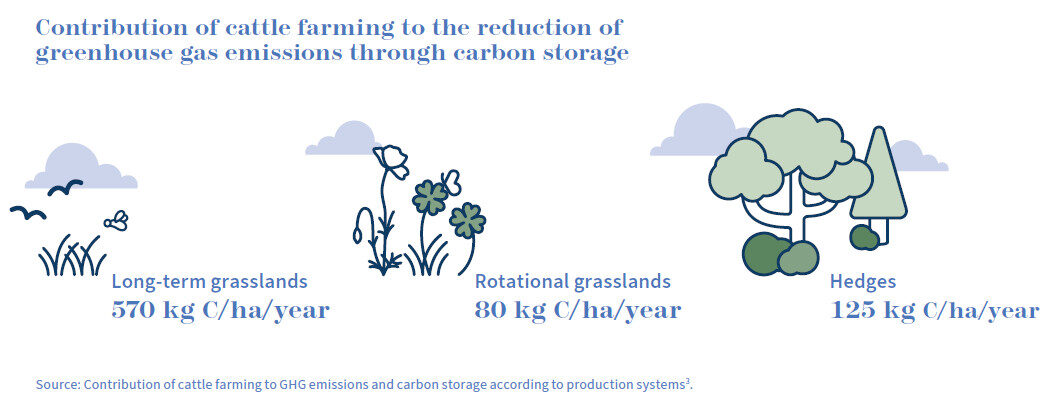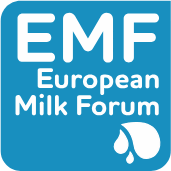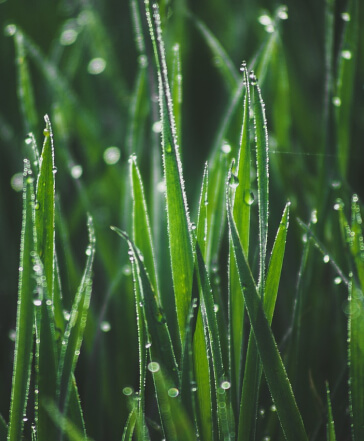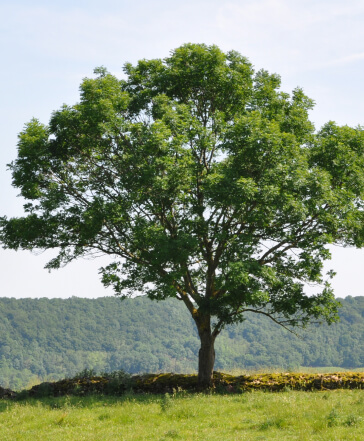Aware of its impact on climate change, the French dairy sector has committed to reducing its carbon footprint1 by 17% per litre of milk leaving the factory between 2016 and 2025.
The Low Carbon Dairy Farm Program, based on a diagnostic tool set up in 2013, helps farmers control their greenhouse gas emissions while promoting carbon storage in the soil through hedges and grasslands. With 1,600 advisors now trained in this tool, more than 17,000 farms have already benefited from it.
We are already seeing a 3.5% decrease in emissions between 2016 and 2019. By 2025, the goal is to support all dairy farms in the fight against climate change.
Economically, this will allow farmers who wish to do so to benefit from the carbon credit market. Thanks to the positive impact of their activity, they will be able to trade the emissions avoided and the carbon stored in the soil or hedges, thus leading to a possible improvement in their remuneration. The sector has reduced its carbon foot-print by 20%per litre of milk produced between 1990 and 2010.
Preservation of natural resources
Dairy farming contributes to maintaining open spaces (maintenance of specific fauna and flora, fire prevention, etc.) and to preserving the typicality of French landscapes through grazing, main tenance of hedges, and manage-ment of land parcels. It also enhances the value of areas where it would be difficult to carry out another economic activity (summer pastures, mountains, marshes, etc.). It preserves biodiversity (fauna and flora) both on the land and in the soil.
The issue of preserving biodiversity is very important within the sector, parti-cularly with regard to biodiversity described as “ordinary” (corresponds to common species and landscapes that contribute to the proper functioning of ecosystems providing services to humans). To help farmers take these issues into account, a tool called Biotex is available to them.
This tool, developed by the Institut de l’Élevage with the support of the CNIEL, allows them to better understand the links between the biodiversity of their territory and their farm through their management of grasslands, crops, and landscapes.





